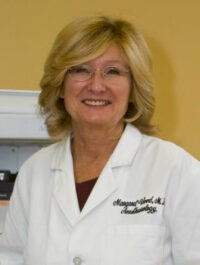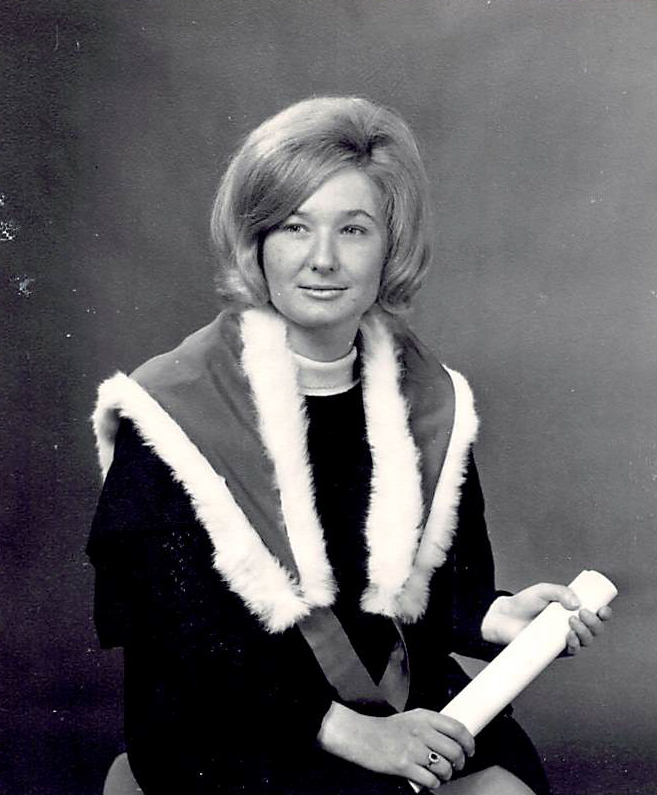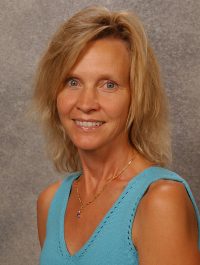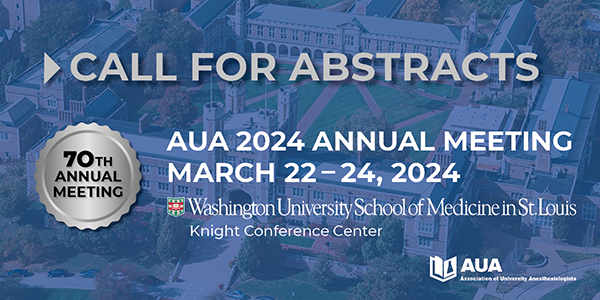Dr. Margaret Wood: “Three Things in Life”
 Dr. Wood came from humble beginnings. She was born in Leeds, England in 1946; her father did not graduate from high school and she was the first member of her family to attend college—something she was keen to point out was true for many of her generation. Her family was incredibly supportive of her education, encouraging her to attend a competitive public high school and providing her with a loving family environment to study and succeed. Every Friday night her father brought home a book for her to read which cultivated her life-long love of reading. But one of these books had a profound effect on her that would prove pivotal to her life in ways that could not have been foreseen at the time—"The Citadel” by AJ Cronin (published in 1937), which was widely seen as the inspiration for the UK National Health System, exposed the injustices and inadequacies of prewar health-care and the battles of the (fictional) physician Andrew Manson to apply the scientific method to overcome these inadequacies and injustices. Parenthetically in the age of COVID-19, his fictional battles against the scourges of infections such as tuberculosis and typhoid have a new resonance. Andrew Manson the protagonist in The Citadel trained at St. Andrews Medical School, Scotland and after reading this book, at the age of 11, Dr. Wood decided she too would become a physician and go to St Andrews University. After high school, she went directly to medical school, St. Andrews University of course. It was quite an experience when as an 18-year-old, she packed all of her belongings into one trunk, went to the train station and did not return home again until Christmas—and of course no cell phones to call home!
Dr. Wood came from humble beginnings. She was born in Leeds, England in 1946; her father did not graduate from high school and she was the first member of her family to attend college—something she was keen to point out was true for many of her generation. Her family was incredibly supportive of her education, encouraging her to attend a competitive public high school and providing her with a loving family environment to study and succeed. Every Friday night her father brought home a book for her to read which cultivated her life-long love of reading. But one of these books had a profound effect on her that would prove pivotal to her life in ways that could not have been foreseen at the time—"The Citadel” by AJ Cronin (published in 1937), which was widely seen as the inspiration for the UK National Health System, exposed the injustices and inadequacies of prewar health-care and the battles of the (fictional) physician Andrew Manson to apply the scientific method to overcome these inadequacies and injustices. Parenthetically in the age of COVID-19, his fictional battles against the scourges of infections such as tuberculosis and typhoid have a new resonance. Andrew Manson the protagonist in The Citadel trained at St. Andrews Medical School, Scotland and after reading this book, at the age of 11, Dr. Wood decided she too would become a physician and go to St Andrews University. After high school, she went directly to medical school, St. Andrews University of course. It was quite an experience when as an 18-year-old, she packed all of her belongings into one trunk, went to the train station and did not return home again until Christmas—and of course no cell phones to call home!
She remembers her first week of medical school in anatomy class. The Chairman of Anatomy, Rex Copeland told the entering class “you can have three things in life: (1) job/career, (2) hobbies/interests/social life and (3) a family. You can have these three things throughout your life but only two at one time”. In the mid-1960’s, women were limited to 10% of the medical school class and a successful career in a medical subspecialty in the 60’s and early 70’s was perceived as being difficult, perhaps even inappropriate for women. However, the late 60’s and early 70’s was a period when her generation believed they could do anything. There was a pervasive optimism in that immediate post war generation—"perhaps because there were so many of us” said Dr. Wood. The post-war austerity had disappeared, the Beatles and Rolling Stones provided the soundtrack of the age and women wore mini-skirts(!) In anatomy class—as she says “over a dead body” she met Alastair, a fellow medical student who would become her husband.

This time was also the period when drug therapy underwent huge advances with improved understanding of drug targets and drug disposition resulting in major therapeutic advances—new antibiotics, beta blockers, anti-hypertensives and non-surgical treatments for peptic ulcer disease to name just a few. Not surprisingly therefore Dr. Wood enjoyed pharmacology and therapeutics in medical school and was intrigued by the intersection of therapeutics with clinical medicine.

After graduation from medical school and internship she made the decision to remain in academic medicine—at the time an unusual choice as there few if any role models of successful women in academic medicine. She chose to enter anesthesiology which was just beginning to emerge as a major specialty and by that time she had recognized that she enjoyed acute care medicine and the exposure to cutting edge medical technology. In pursuing a career, she considered pediatrics and forensic medicine, and though she had not been exposed to the practice of anesthesia in medical school, it was a new and exciting specialty and because it was new and expanding it was willing to give women an opportunity. She did her residency in Dundee and a short period in neonatal anesthesia at Alder Hey Children’s Hospital in Liverpool. In these days, hyperventilation, narcotics and no volatile anesthetics were the standard anesthetic practice for neonates. It was a pivotal experience for Dr. Wood, gaining critical experience in providing anesthesia for neonates—still relatively rare at that time. She recalls Dr. Jackson Rees (of the Jackson Rees Pediatric Circuit), a man with incredible charisma and optimism who seemed to always be just finishing a cigarette so that he appeared to come into the operating room surrounded by a whirl of smoke and a twinkle in his eye.”
Her research began in the Pharmacology Department in the lab of Ian Stevenson (Dundee, Scotland), studying drug metabolizing ability which she measured in OR personnel including her colleagues on her post call days and showed that enzyme induction occurred in OR personnel and therefore volatile anesthetics needed scavenging. This discovery (and other evidence) changed occupational health and safety administration (OSHA) rules. As a first year anesthesia resident, she presented her research at the Anesthesia Research Society (ARS), much like the AUA. For membership into the ARS you had to present a paper and the society then voted on whether to accept you as a member—an intimidating experience. It was a very select society with few members. However, she feels that the presentation of research at an early career stage in anesthesia was the inspiration of her future Apgar Scholars program to give residents a taste of the excitement of cutting-edge research and the discipline of its presentation at an early stage in their professional life.
In 1976, she came to the United States, Vanderbilt, for 2 years. The chair of Anesthesia, Dr. Brad Smith, invited her to do a cardiac anesthesia fellowship. In the United States academic medicine was more open to women and encouraged a “can do attitude”. Dr. Bradley Smith gave her resources and mentorship which allowed her to develop her research program in drug metabolism. Pediatric cardiac anesthesia was coming into its own at Vanderbilt with the use of hypothermia and circulatory arrest. Harvey Bender was recruited as the surgeon and Thomas Graham was recruited into pediatric cardiology; it was an exciting time. The 1980s was a period of immense growth in pharmacologic agents including anesthesia drug development. All of this was fortuitous in her research efforts.
While at Vanderbilt she had two children. Though she was a woman, it did not seem difficult to her at the time to build her career in anesthesia both clinically and through publications. Through her work in anesthesiology and pharmacology, she became full professor with tenure at Vanderbilt in 1986 and was made Division Chief of Cardiac Anesthesia. In 1995, she was invited to assume the Chairmanship of Anesthesiology at Columbia University where she became the Chairman and E. M. Papper Professor.
1996 marked the era of health care reform with very few entering into the specialty of anesthesiology. It was not the easiest of times to assume a chair of Anesthesiology, as the program only matched 3 residents that year. The fact the specialty was in a crisis allowed her to solidify her department and focus on the recruitment of outstanding residents. She started the Apgar Scholars program of mentorship in 2002. This allowed medical students to combine two years in anesthesia research with four years of clinical training. Other anesthesia programs have now adopted similar programs. For Columbia, it allowed growth of research in the specialty as these individuals would later become faculty in the Department. These individuals went on to foster an academic culture within the clinical arena. The idea that everyone can do everything, including research, in the current culture is no longer viable. However, Dr. Wood felt it was important to find a niche for everyone whether it was research, clinical, education or administration. Dr. Wood recognized how fortunate she was to have a School of Public Health at Columbia and that fostering collaboration with epidemiologists would improve the clinical research component of the Department. To further that collaboration and lead its integration into the Department, she developed the “Finster Endowed Professorship” in honor of Dr. Mike Finster.
Dr. Wood in many ways broke the barriers for women in Medicine—she was at the time one of the very, very few women tenured full professors at Vanderbilt, she was the first woman President of the AUA and the first woman Chair of a clinical department in Columbia’s more than 200-year history. Recently she has spoken and written about the issue of promoting gender diversity in medicine. In her editorial in Anesthesia and Analgesia, “Women in Medicine: Then and Now” (May 2015), she describes the important role for women in leadership who “have been there” to develop other women and how “one-on-one mentorship and coaching” can “pull women up” by providing strategic personalized advice. She also recognizes that while work, commitment and ambition are keys to success for both men and women, women suffer from difficulties in mobility—meaning it is often difficult for women to assume a leadership position that involves a geographic move—the perception remains that a family will uproot itself when a husband assumes a new job as his career advances but that same flexibility does not extend to women—and even if it did search committees do not necessarily believe it. For women to assume leadership positions that perception must change.
Throughout her career, she published over 140 manuscripts and book chapters. She remained the Chair of Anesthesiology at Columbia University until 2016—more than 20 years. She built a world-renowned Anesthesiology program with over 100 residents and more than 35 subspecialty fellows. More importantly, she served as a role model for many women and demonstrated that with passion, ambition and hard work all things are possible—she had all three!











